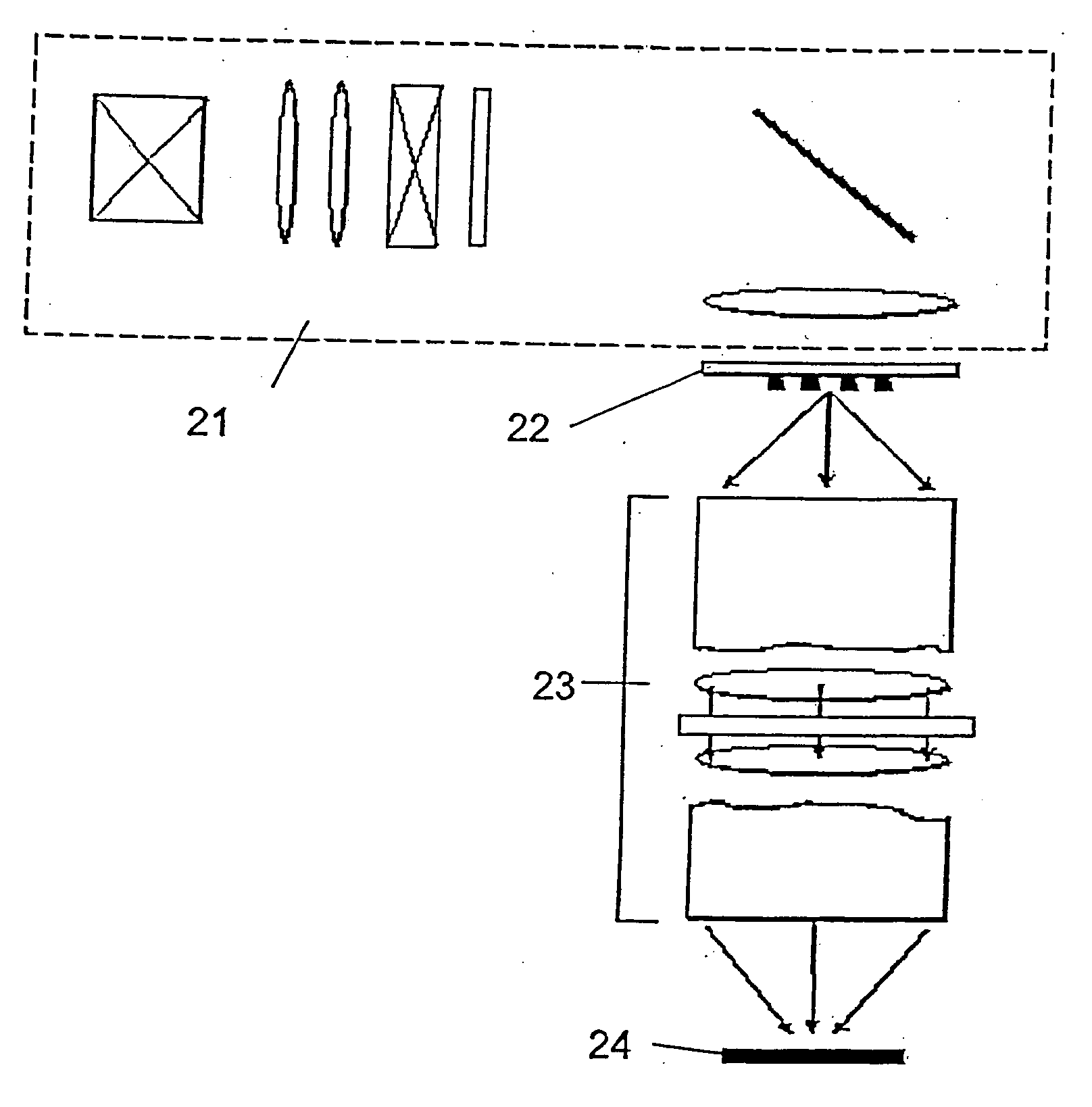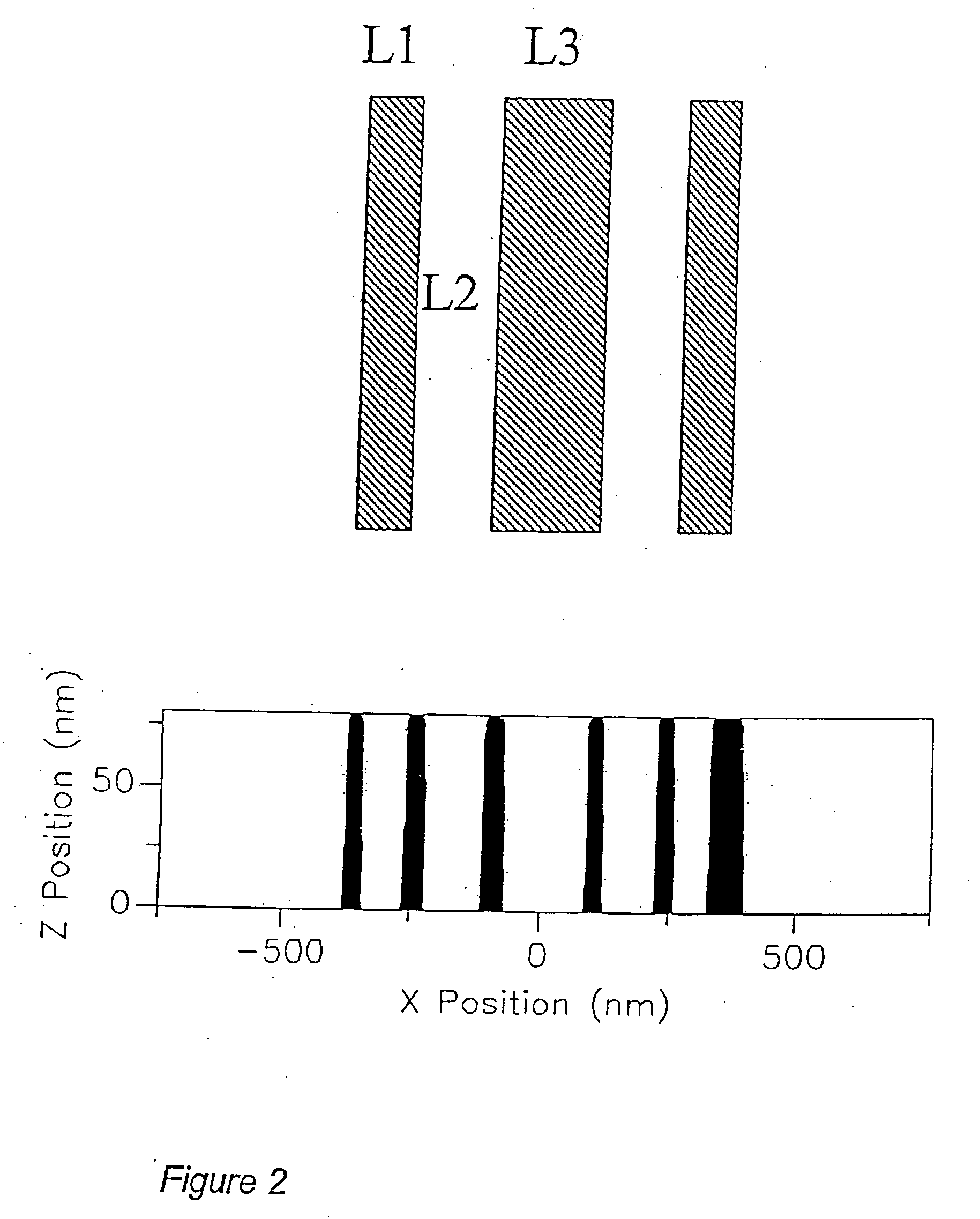Apparatus for aberration detection and measurement
a technology of aberration detection and measurement apparatus, applied in the field of microlithographic imaging, can solve the problems of inconvenient microlithographic application of rayleigh /4 rule, dependant on reference beam (and reference wave error), field use (or in-situ application), etc., and achieve the effect of easing the distinction of aberrations
- Summary
- Abstract
- Description
- Claims
- Application Information
AI Technical Summary
Benefits of technology
Problems solved by technology
Method used
Image
Examples
Embodiment Construction
[0053] When imaging with a projection optical system, the aberrations in the lens pupil introduce deformation to a wavefront resulting in imaging errors. FIG. 1 shows a schematic of a projection imaging system. An illumination apparatus 21 illuminates a mask test object 22 which is imaged through an objective lens 23 onto a photosensitized substrate 24. If a test object is employed on a photomask as a phase pattern, specifically with a phase shifted from that of the surrounding area by 180 degrees, the lens aberration will introduce imaging errors characteristic of the aberration type and the mask geometry. As an example, FIG. 2 shows how three small phase lines (between 0.5 and 1.5 lambda / NA) are printed into a photoresist. The images are a result of lithographic simulation using a Prolith vector model (Prolith Version 7.0, KLA FINLE) with a wavelength of 157 nm, a numerical aperture (NA) of 0.85, a partial coherence value of 0.30, and a resist thickness of 80 nm. The resulting ima...
PUM
| Property | Measurement | Unit |
|---|---|---|
| wavelengths | aaaaa | aaaaa |
| angles | aaaaa | aaaaa |
| thickness | aaaaa | aaaaa |
Abstract
Description
Claims
Application Information
 Login to View More
Login to View More - R&D
- Intellectual Property
- Life Sciences
- Materials
- Tech Scout
- Unparalleled Data Quality
- Higher Quality Content
- 60% Fewer Hallucinations
Browse by: Latest US Patents, China's latest patents, Technical Efficacy Thesaurus, Application Domain, Technology Topic, Popular Technical Reports.
© 2025 PatSnap. All rights reserved.Legal|Privacy policy|Modern Slavery Act Transparency Statement|Sitemap|About US| Contact US: help@patsnap.com



